Autonomous Agriculture, Precision Farming & Robotics
Navigation Systems for Precision Farming and Agricultural Robots
Advanced Navigation has long understood the benefits of artificial intelligence and machine learning using artificial neural networks, not only in its areas of expertise but the widespread adoption of this technology to create better, more responsive, responsible, and sustainable products. Advanced Navigation products are designed to deliver positioning everywhere and be tools that not only provide accurate and reliable navigation but also assist in the adoption of AI for better outcomes and productivity.
Our clients are companies that are designing purpose-built farm robots or retrofitting older manually operated machines to become autonomous. Farming as a service (FaaS) practices are currently becoming established as an alternative to outright equipment purchases, which allows farmers to reduce capital expenditure by contracting their required works when needed by autonomous agriculture machinery contractors. As a result, CO2 emissions are reduced due to gained efficiencies and reduced overall fuel and materials usage and will continue to shrink as more agriculture robots and autonomous ag machines become electrically powered and shared amongst farms.
The advantages of using navigation technology and autonomous systems in agriculture are many. Apart from the obvious saving of labour, particularly in the operation of tractors, the ability to use technology to find and identify various hazards to crops (weeds, pests and so on) and accurately geo-reference it allows farmers to react very specifically. This means targeted use of pesticides and herbicides or general weeding that helps minimize the amount of chemicals used and allows farmers to keep their soil healthier. The results are significant saving in time and cost and better quality and higher yield crops.
Trusted by the world’s most innovative companies

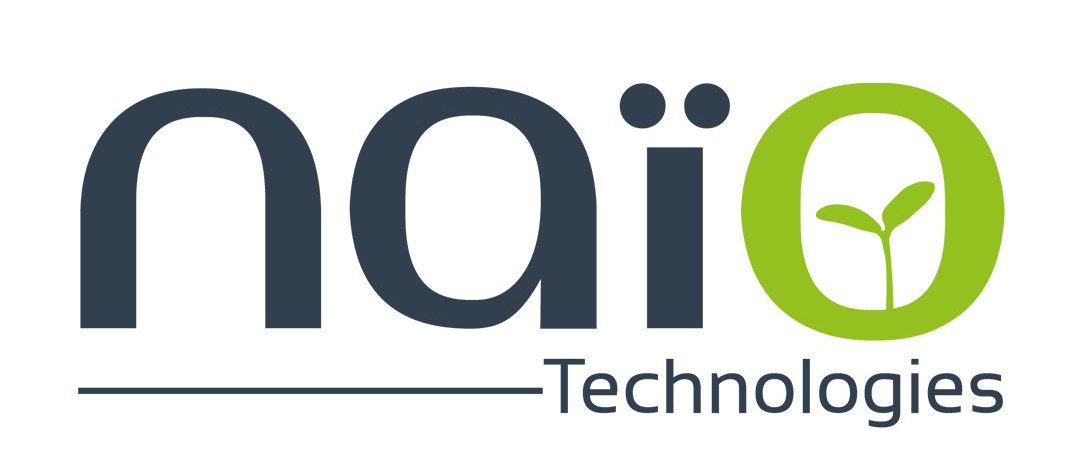


GNSS Compass Dual Antenna Satellite Compass and Inertial Navigation System
The GNSS Compass is a robust, proven solution that is being used in the field in both autonomous tractors and farm equipment and also purpose-built agricultural robots. The dual antenna array provides high-accuracy position, roll, pitch and heading and with RTK and SBAS support is an ideal navigation tool for autonomous machinery and autonomous agriculture vehicles. Heading is available when the vehicle is stationary, making the solution ideal for precision agriculture and autonomous maneuvering in tightly packed row crops, such as vineyards.
GNSS/GPS-Aided Inertial Navigation Systems
Advanced Navigation has a broad range of GNSS/INS inertial navigation systems (INS) that are extremely well suited to precision UAV and autonomous agriculture vehicle applications. These can be readily integrated as payload to field survey UAVs to provide high accuracy GNSS-based georeferencing for precision agriculture data acquisition, mapping and inspection duties. Even in degraded GNSS areas, the inertial sensors are able to continue delivering precise navigation and positioning data. As with all Advanced Navigation products that use GNSS and GPS, the systems are multi-frequency and multi-constellation straight out of the box, with support for RTK to meet the most demanding requirements. An example is to survey a crop and use the data to geo-reference weed infestations, crop disease and pests. The location data is then used by applicable equipment for targeted pesticide spraying and weed control applications.
Motion and Orientation Detection Systems
For applications that are not necessarily reliant on absolute position and navigation, Advanced Navigation has high quality, precision motion detection devices that are capable of providing accurate roll, pitch, yaw/heading data. For example, for controlling motion of robot arms and machinery in autonomous farming and crop processing applications. Another example is to move and aim spray heads and weeding tools for targeted pesticide spraying and weed control applications.
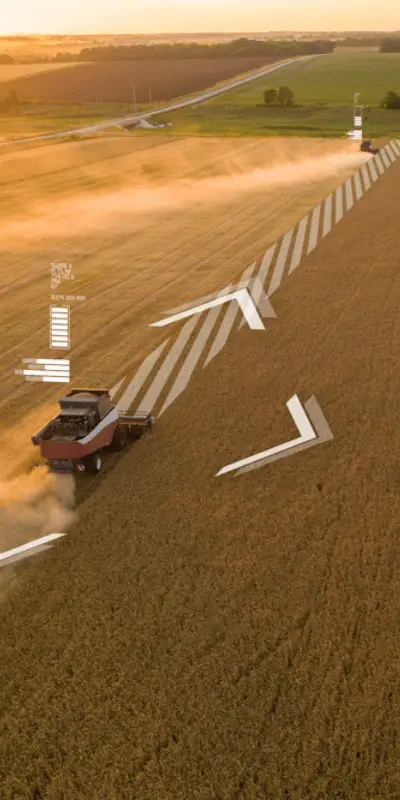
Applications
New knowledge, combined with innovative thinking and the adoption of modern technologies is improving productivity and providing solutions to farmers’ problems.
Precision Agriculture
Precision agriculture is grounded on the concept of using careful observation and measurement from which to formulate strategic responses to maximize yield. The more variables that can be measured and the greater the data that can be analyzed and linked, the better becomes our ability to understand soil conditions, when and where to plant different crops and how to look after them for sustained output. The number of variables that can be measured increases as we develop appropriate sensors and supporting technology.
For example, measuring topology, sun exposure and angle, soil composition, pH, moisture, oxygen and nitrogen content as well as ongoing analysis of harvest yields and quality. Measurement on its own is not enough, however. The precise locations of where measurements are taken and observations are made is paramount to analysis, awareness and strategizing. GNSS makes precision agriculture possible as it can be readily used to curate digital twins of farmland that accurately detail applicable data in a highly visual format. Mapped data can be used by farmers and researchers in understanding and managing agricultural land more efficiently.
Autonomous Agriculture
For agriculture, the coupling of GNSS satellite navigation and AI brings opportunities that are drastically altering farming techniques. Being able to navigate is essential to an autonomous farming vehicle and leveraging the global navigation satellite system (GNSS) is a very effective, proven way to do this. By having high accuracy position data, an autonomous tractor, for example, can very accurately cultivate a field and plant seed, day or night.
As another example of autonomous farm machinery, a UAV (uncrewed aerial vehicle) equipped with a camera and machine vision designed to detect fruit of a certain size can map orchards and pinpoint where to pick fruit. In this way, fruit picking activities can be targeted and optimized and harvest quality maximized.
Specially designed robots can tend tightly rowed vineyards, without damaging the precious vines, and perform a multitude of tasks that otherwise takes many hands and much time to do.
Agriculture Robotics
Autonomy and artificial intelligence (AI) are becoming fundamental to our future, from what may have been initially seen as convenience, to a dawning necessity that is a means of furthering human capability and capacity.
AI is typically tailored for specific purposes and to achieve specific results. From a machine perspective, it effectively forms a system that enables a machine to detect or sense, comprehend, judge, and take action. In a way that we humans learn how to improve how we do things from experience, if the AI has a machine learning component, over time, it will learn from previous actions and results to better respond and complete its tasks more effectively.
For example, Advanced Navigation utilizes a machine learning artificial neural network (ANN) in its navigational products. One aspect of this system is to use past data from inertial sensors and gyroscopes and so on and compare that to actual changes in acceleration and position as referenced by GNSS or other means. This allows the AI to “understand” sensor accuracy and drift errors and use this in future signal processing to increase the overall accuracy of the system.
Recommended Solutions
Certus
Market-leading dual antenna INS
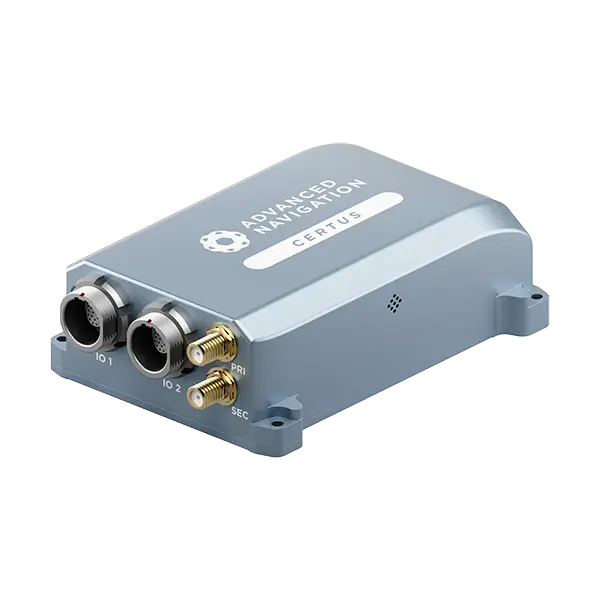
Roll & Pitch
0.1 °
Heading (GNSS)
0.1 °
Bias Instability
3 °/hr
Position Accuracy
10 mm
Full Specifications
Certus Evo
Ultra-high accuracy MEMS INS
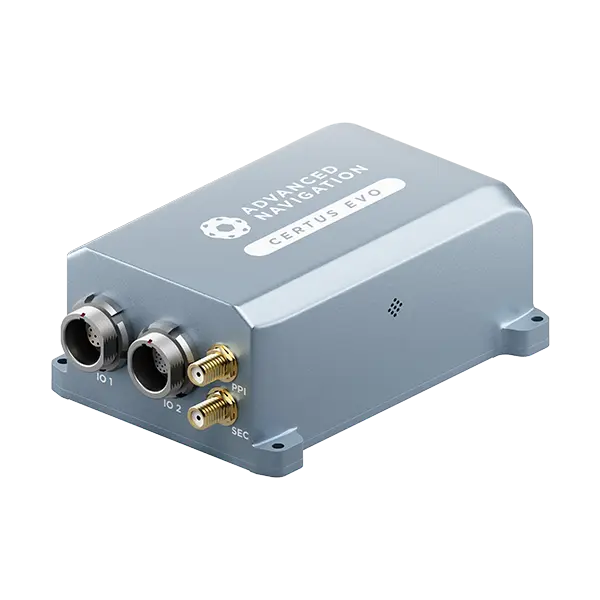
Roll & Pitch
0.03 °
Heading (GNSS)
0.05 °
Bias Instability
0.2 °/hr
Position Accuracy
10 mm
Full Specifications
GNSS Compass
Plug-and-play GNSS/INS
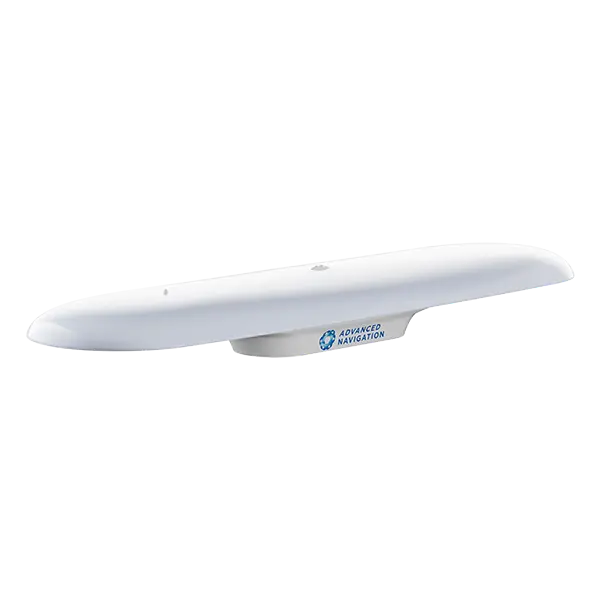
Roll & Pitch
0.4 °
Position Accuracy (RTK)
0.01 m
Heading
0.2 °
Update Rate
200 Hz
Full Specifications
Accurate Positioning in the Most Demanding Conditions
High Performance
Our systems deliver the highest performance and richest feature set on the market. Our high-performance navigational systems are designed to industry standards, ensuring reliability and efficiency across diverse applications.
Trusted Reliability
All our systems are designed and tested to safety standards with fault tolerance built in to provide you with the highest reliability possible. Our reliability is trusted by many of the world’s largest companies.
Quality
Our systems are built to the highest quality standards in Australia to endure the test of time in the most difficult conditions. You can rely on our products.
The Latest News in Autonomous Farming
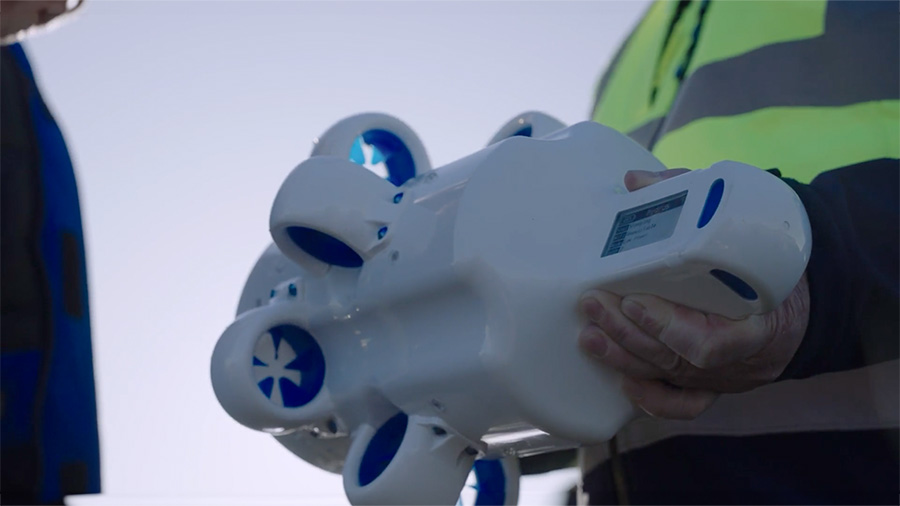
Enhancing Aquaculture Sustainability with Hydrus
5 October 2023
Go to Article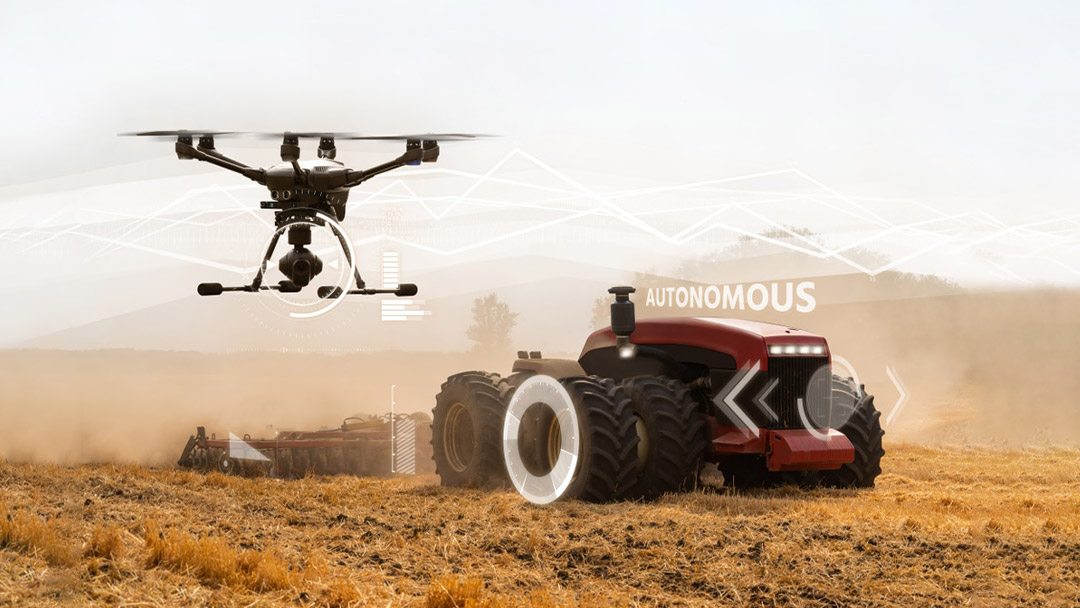
A Leap Forward in Ag-Tech: How Autonomous Systems and Precision Agriculture are Transforming Farming – A Guide
6 April 2023
Go to Article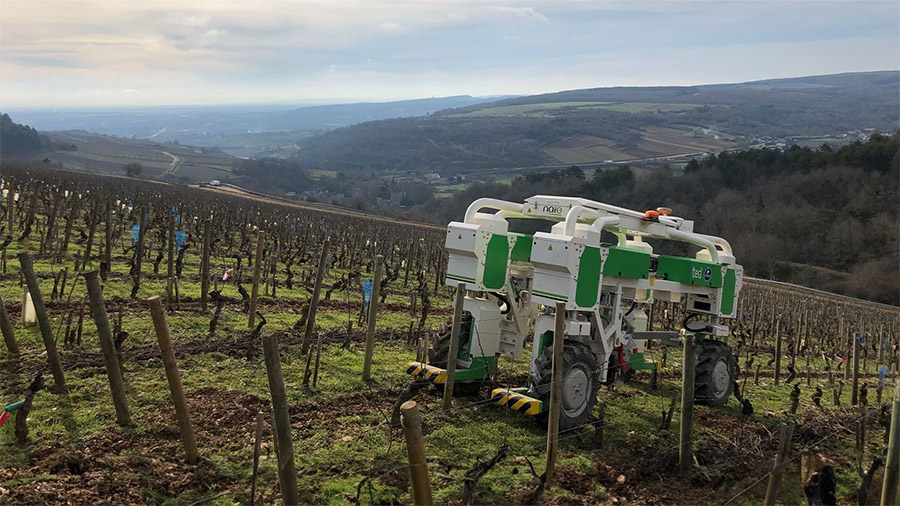
GNSS Compass Keeps the Naïo Technologies “Ted” Agricultural Robot Accurately Tending Vineyards
8 August 2022
Go to ArticleCommon Questions about Autonomous Farming, Agriculture & Robotics
What are the current challenges facing the agriculture industry?
Agriculture is a gigantic, global industry that continues to grow in step with populations and increasing demands for food and crop diversity. The challenges facing agricultural industries are large and manifold and, in some cases, very much on the rise. Besides the need to basically increase output, agriculture is facing a foundational challenge and that is how to boost output with less labour.
Labour shortages are a massive issue. Changes in technology and the inevitable changes in social structures and vocational opportunities are driving people in many parts of the world toward urban centre living and technology-based jobs. This has left farmers with more work to do, and this negatively impacts not only production but the physical and mental health of farmers and their families.
Other equally challenging requirements are pressures to increase yield per acre of land, adopt environmentally friendly farming practices, adapt to climate change, reduce emissions and improve sustainability. These are complex, interdependent issues that are not easily remedied.
How much is the autonomous agriculture market worth?
The adoption of autonomous agriculture is an increasingly worldwide phenomenon. The global autonomous farm equipment industry is a sector that, according to analysis from ReportLinker, is expected to maintain a 13.1% CAGR to become worth over US$135B by 2026 (from an estimated US$65B in 2020).
This tremendous growth shows great excitement in recognition of the confluence of technologies and the many advantages that autonomous technology offers farmers and our collective ability to sustain populations. Autonomous agriculture represents a new era of agricultural efficiency and stewardship.
How does an autonomous tractor work?
An autonomous tractor typically performs simple, traditional tractor functions, such as soil tilling, cropping and seeding. An autonomous tractor will be equipped with a GNSS based navigation system, such as GNSS Compass, that inputs position and heading data into the tractor control system. With this data and a predefined mission; for example, ploughing a field, the tractor control system will operate the steering, drive system and farm implements at the correct locations and at the required speed.
Existing manually operated tractors can often be retrofitted to become autonomous. Additionally to the basic systems mentioned above, autonomous tractors and farm equipment will require additional safety sensors that are able to detect humans, animals, obstacles and automatically stop the vehicle to prevent collision and to prevent the vehicle from traveling off course.
What are the benefits of autonomous agriculture?
Intertwining sensors, machine vision and AI with mechatronics and robotics provides a platform for practically limitless farming applications and a very positive pathway into sustaining crops for future generations. Farmers have the ability to more deeply understand the land, soil and cause and effect on harvest quality and quantity through data acquisition and analysis. Using new knowledge and sophisticated maps enable precision farming techniques to be adopted that are further enhanced by autonomous and robotic agricultural tools.
Autonomous tractors can plough fields day or night and really only need to stop to refuel or change implements. UAVs can undertake repeated missions to examine fields for various phenomena that otherwise require farm workers to be on site. Weeds and diseases can be rapidly identified and eradicated before crops are harmed or lost. Fences can be checked for damage or points where vermin can enter fields. Fruit can be picked at the optimum time and quality can be assessed on-the-fly by autonomous picking robots. These are just a few examples of the tasks that autonomous ag, AI and machine vision can achieve.
Targeted precision farming that uses autonomous farm machinery maximizes the use of resources and best use of farmers’ time. Small-scale battery-powered aerial vehicles can be used instead of manned helicopters; and tractors and farm robots can operate without human supervision. Fuel use is minimized as farmers needing to personally travel the farm for inspections is reduced to only when actual on-hand maintenance is required.
In which direction is agricultural research going?
Ever increasing research has led to a far deeper understanding of agriculture and the complex processes that lie beneath the notion of putting seed into the soil and later digging it up and eating it.
We now understand much more about soil and how to keep it healthy without resorting to excessive use of chemicals and artificial boosting that, in the long run, are unsustainable. We are gaining an understanding of the complex relationships between soil, weather, terrain, sun, wind, water and humans on our ability to farm successfully in the long term. New knowledge, combined with innovative thinking and the adoption of autonomous technology is providing solutions to farmers’ problems.
